Following our launch article I promised an update on the performance scores of the Exynos 9810 variant of the Galaxy S9. I was able to have some time with one of the demo devices at the launch event and thoroughly benchmark it with a few of our common tests.
| Samsung Exynos SoCs Specifications | |||
| SoC | Exynos 9810 | Exynos 8895 | |
| CPU | 4x Exynos M3 @ 1c 2.704, 2c 2.314, 3-4c 1.794 GHz 4x 512KB L2 4096KB L3 DSU 4x Cortex A55 @ 1.95 GHz No L2 512KB L3 DSU |
4x Exynos M2 @ 2.314 GHz 2048KB L2 4x Cortex A53 @ 1.690GHz 512KB L2 |
|
| GPU | Mali G72MP18 @ 572 MHz |
Mali G71MP20 @ 546 MHz |
|
Firstly one of the biggest questions for me was confirming the final clock that Samsung would use on the Galaxy S9 – and it seems that clock is 2704 MHz which is 200MHz less than the 2.9GHz that SLSI advertises. The 2.7GHz clock however is only achievable on a single core as we see again Samsung employ scalable maximum frequencies depending on active core numbers in the big cluster. At two active cores the frequency drops down to 2314MHz while three and four active cores the cores clock down to only 1794MHz.
We can also confirm that the Mali G72MP18 GPU is running at a very conservative 572MHz which isn’t what we had expected given that the MP20 configuration of the E8895 was already running at 546MHz. The resulting performance gains for the GPU thus seem to be even lower than we had expected as I was betting on a ~650-700MHz clock.
I was also able to confirm the cache configurations of the CPUs with help of our latency test. The M3 cores L1D cache increases to 64KB from the 32KB on the M1/M2 cores while employing 512KB of private L2 caches. The L3 consists of 4MB. The little cores came at a surprise as they look to be in a separate cluster instead of in a DynamIQ cluster with the big cores. Here it looks like Samsung has decided not to employ the optional L2 caches for the Cortex A55’s and instead they solely rely on a 512KB L3 cache of the DSU. The latency scores to DRAM are outlandishly good and the best we’ve ever seen among current Android SoCs so Samsung has definitely introduced a new generation of interconnect or memory controllers.
I reiterate the GeekBench 4 scores where we saw the Exynos 9810 achieving excellent performance gains vastly outpacing the Snapdragon 845 and coming into the territory of the Apple A10 and A11. The floating point performance increases especially exceed Samsung’s projected gains of 2x as we see a 114% improvement even at the lowered 2.7GHz frequency.
When looking at the performance per clock it is clear how the Exynos M3 distinguishes itself as a much wider microarchitecture compared to any other existing CPU which powers Android SoCs.
Finally I stumbled upon some very questionable performance figures when testing system performance. I’m not going to go into the details for every benchmark as they are generally all painting the same picture:
What seems clear is that there is something which is very very wrong as the Exynos 9810 S9+ which I tested was barely able to distinguish itself from past year’s Exynos 8895 yet alone the Snapdragon 845 in the Qualcomm Reference Device which we previewed earlier this month. I looked through the system and monitored frequencies and indeed the big cores were reaching the maximum 2.7GHz core frequency. The only explanation I have right now is that it’s possible that the DVFS configuration as well as the scheduler are currently so conservatively tuned that there is barely any activity on the big cores. I dug a bit more through the system and found out Samsung uses some new scheduler called “eHMP”. I’m not sure if this is something based on EAS but the system did use schedutil as a frequency governor.
One of the Samsung spokesmen confirmed to me that the demo unit were running special firmware for MWC and that they might not be optimized. I’m having a bit of a hard time believing they would so drastically limit the performance of the device for the show demo units and less so that they would mess around with the scheduler settings. I did get confirmation that Samsung is planning to “tune down” the Exynos variant to match the Snapdragon performance – however the current scores which I got on these devices make absolutely no sense so I do hope this is just a mistake that will be resolved in shipping firmwares and we see the full potential of the SoC.
On the GPU side the lower frequency of the new Mali G72MP18 is a surprise as the minor clock bump is negated by the fact that the new SoC has two less GPU cores compared to the 8895. If the performance per clock per core between the G71 and G72 were the same then this would actually mean a downgrade in raw GPU power from the Exynos 8895, so any increase, if any, should come solely thanks to the architectural changes of the new G72 GPU as well as possibly SoC memory subsystem improvements.
In Manhattan 3.1 the Exynos 9810 sees a mere 7% increase and lags far behind the new Snapdragon 845’s Adreno 630.
In T-Rex, the increase is 18% which might be one of the benchmarks that Samsung sourced their 20% improvement from. Here the Exynos is more near to the performance of the Snapdragon 845.
I wasn’t able to properly measure power on the event demo devices as they had different interface settings than my tool had been programmed with so I only was able to make some inaccurate estimates based on coarse current readout from the system. For CPU workloads our usual CPU power virus used up 3.1W at 1-core 2.7GHz loads. 2-core 2.3GHz seemed to have floated around 3.1-3.5W and 4-core load at 1.8GHz maintained this TDP. Over the following days I’ll need more time and hopefully get some SPEC figures to paint a more accurate picture – for now the results could swing either way and be either positive or negative for the M3 cores. It’s clear that the higher frequencies have a very large power penalty and Samsung should want to operate more in the low-to-mid frequencies, hence the current frequency scheme.
On the GPU side for Manhattan fluctuated between 4.5 and 5.2W which is an improvement over the Exynos 8895 – but again still at a disadvantage to the Snapdragon 845.
Overall today’s quick benchmarking session opened up more questions than it managed to answer. Hopefully with more time we’ll be able to investigate the working of the new SoC and, fingers crossed, today’s results are not representative of shipping product as that would otherwise be a utterly massive disappointment.
from AnandTech http://ift.tt/2os1l5F
via IFTTT
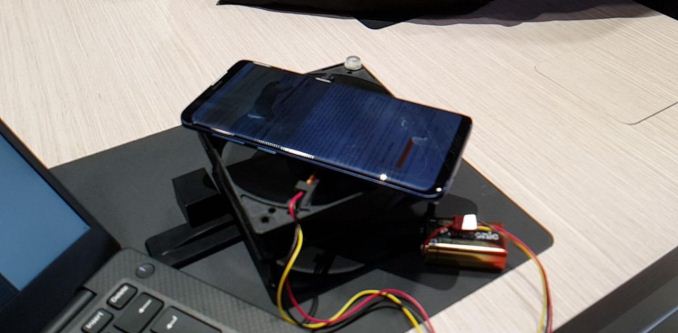
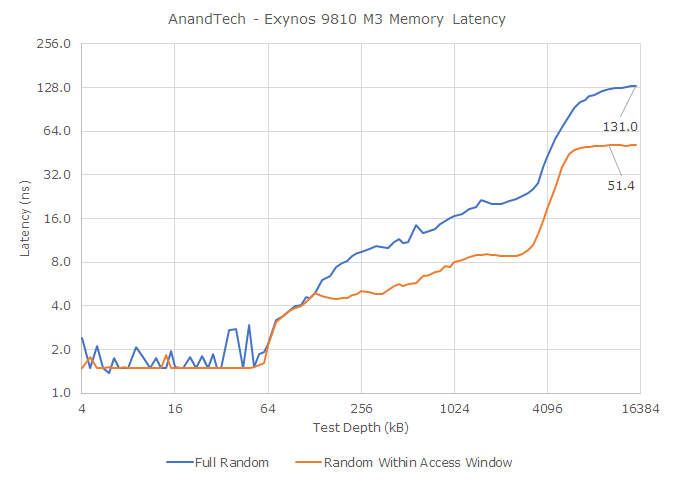
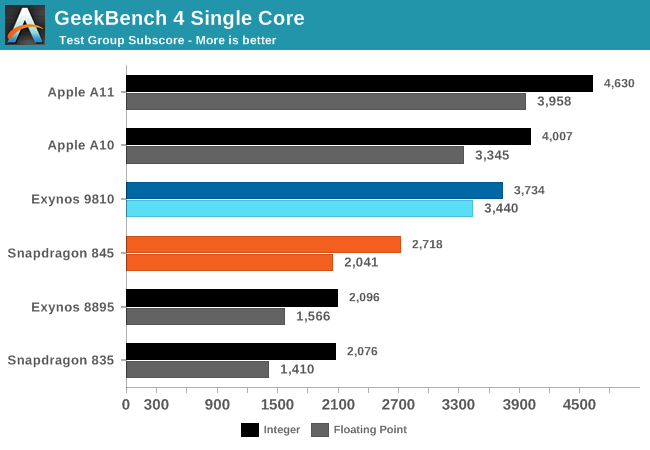
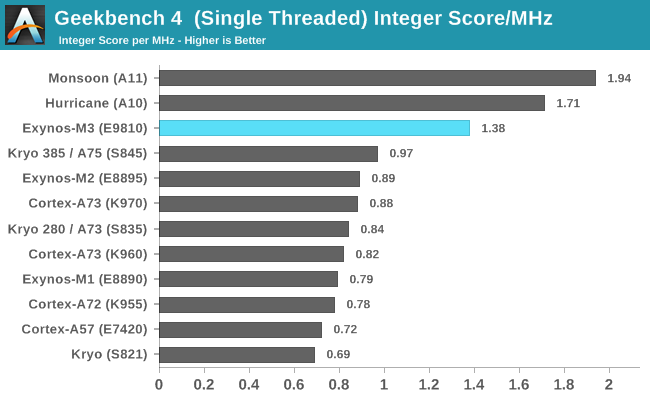
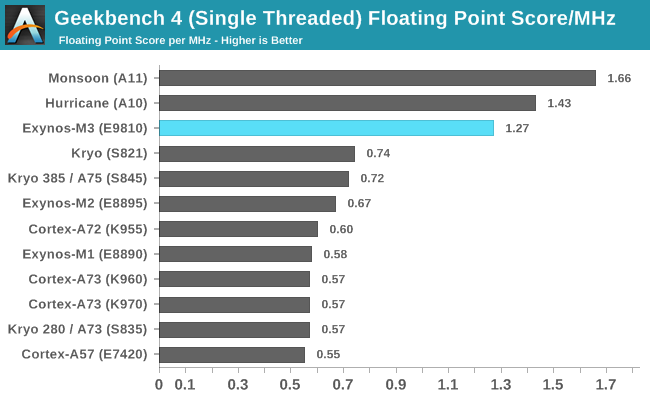




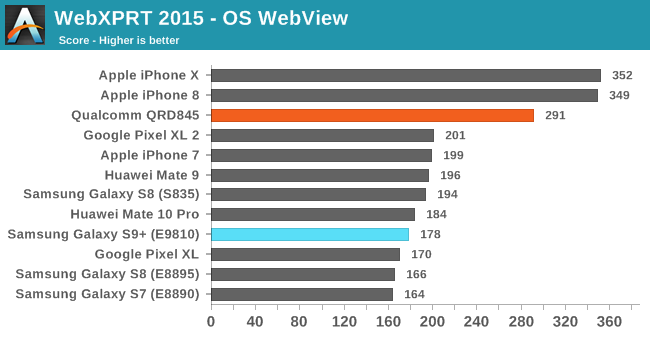



0 comments:
Post a Comment